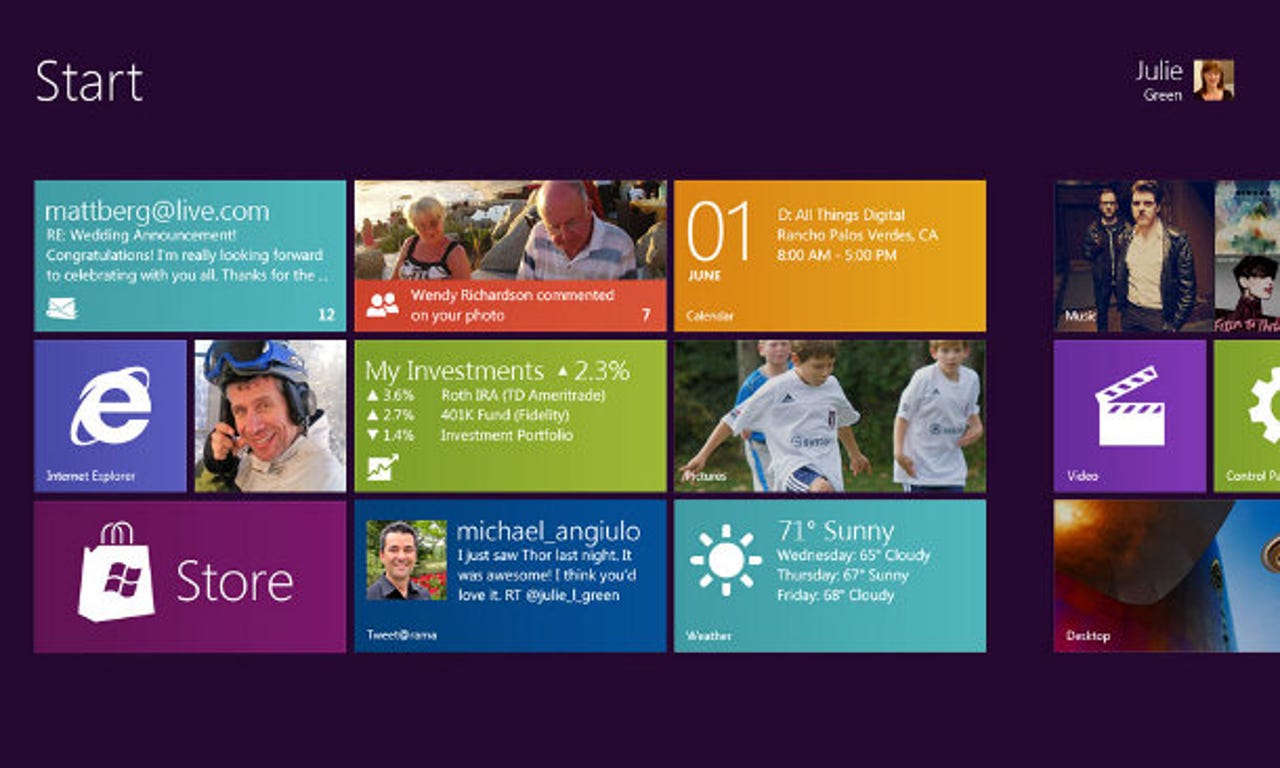Windows 8: Hyper-V and faster boot times coming to next OS, Microsoft confirms

Redmond gives a sneak peak of forthcoming operating system...
Microsoft has revealed a little more of what users can expect from Windows 8.
The operating system, thought to be launching in 2012, will be the successor to Microsoft's fastest-selling OS to date, Windows 7.
Earlier this year Microsoft announced that the forthcoming OS, currently going under the codename of Windows 8, will represent a shift away from the traditional Windows design, moving instead towards a user interface similar to that used by Windows Phone 7.
This week Microsoft has been giving more details on what other new features will be part of Windows 8.

Microsoft has redesigned the user interface for Windows 8 to make it more suitable for tablet devicesImage: Microsoft
Steven Sinofsky, Microsoft's president of Windows and Windows Live, revealed that the company has been working at cutting boot times for the OS.
"We designed Windows 8 so that you shouldn't have to boot all that often (and we are always going to work on reducing the number of required restarts due to patching running code). But when you do boot we want it to be as fast as possible. This is a very deep topic and we have a lot of folks focused on it," Sinofsky wrote on Microsoft's Building Windows 8 blog.
Also posting on the blog, Gabe Aul, a director of program management in Windows, said the speeded-up boot process is down to Windows 8 hibernating the kernel session, rather than shutting it down entirely.
"The key thing to remember though is that in a traditional shutdown, we close all of the user sessions, and in the kernel session we close services and devices to prepare for a complete shutdown.
"Now here’s the key difference for Windows 8: as in Windows 7, we close the user sessions, but instead of closing the kernel session, we hibernate it."
Windows 8 is "effectively saving the system state and memory contents to a file on disk (hiberfil.sys) and then reading that back in on resume and restoring contents back to memory. Using this technique with boot gives us a significant advantage for boot times, since reading the hiberfile in and reinitialising drivers is much faster on most systems," Aul added – between 30 to 70 per cent faster on most systems tested by Microsoft.
In an earlier post this week on the Building Windows 8 blog, Microsoft also divulged that its Hyper-V hypervisor will feature in the upcoming OS.
Hyper-V will allow users to run multiple 32-bit or 64-bit OSes on a single Windows 8 machine.
The decision to add Hyper-V – previously only found on Microsoft's Server OS, not its client OSes – are to cater for two particular types of users: software developers working across multiple platforms and clients and servers, and IT professionals looking to manage virtualised clients and servers, according to Microsoft.
"Hyper-V enables developers to easily maintain multiple test environments and provides a simple mechanism to quickly switch between these environments without incurring additional hardware costs… We also know that many of you use virtualisation to try out new things without risking changes to the PC you are actively using," Mathew John, a program manager on Microsoft's Hyper-V team, wrote on the blog.